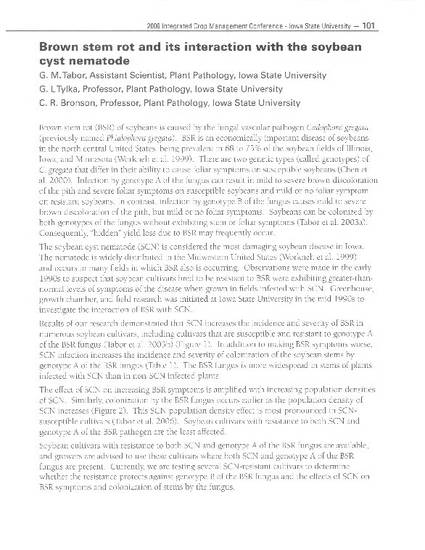
Brown stem rot (BSR) of soybeans is caused by the fungal vascular pathogen Cadophora gregata (previously named Phialophora gregata). BSR is an economically important disease of soybeans in the north central United States, being prevalent in 68 to 73% of the soybean fields of Illinois, Iowa, and Minnesota (Workneh et al. 1999). There are two genetic types (called genotypes) of C. gregata that differ in their ability to cause foliar symptoms on susceptible soybeans (Chen et al. 2000). Infection by genotype A of the fungus can result in mild to severe brown discoloration of the pith and severe foliar symptoms on susceptible soybeans and mild or no foliar symptom on resistant soybeans. In contrast, infection by genotype B of the fungus causes mild to severe brown discoloration of the pith, but mild or no foliar symptoms. Soybeans can be colonized by both genotypes of the fungus without exhibiting stem or foliar symptoms (Taboret al. 2003a). Consequently, "hidden" yield loss due to BSR may frequently occur.
Available at: http://works.bepress.com/gregory-tylka/233/
